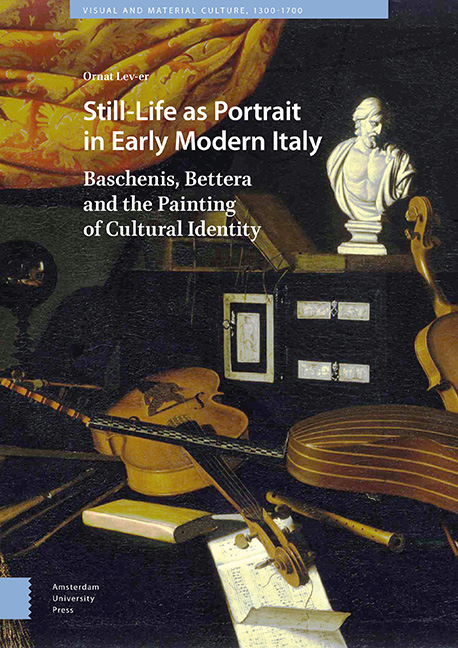 Still-Life as Portrait in Early Modern Italy
Still-Life as Portrait in Early Modern Italy 3 - Keeping Score: Painting Music
Published online by Cambridge University Press: 23 June 2021
Summary
[Music] is the means with which to level moods, to give good tone to the voice, to set time for moving and measure for action. It also recreates the intellect, softens the mind, heals all our furious, rude, and immoderate thoughts and intentions.
In this chapter, which deals with music and its representations in Baschenis's and Bettera's still-life paintings, I offer a reading that breaks with the customary interpretations of these works. Scholars regard the musical instruments in these works – some of which are featured upside down and covered in a film of dust, their strings torn – as a metaphor for the fleeting nature of music and of human life. In what follows, I offer a different reading that calls for a comprehensive observation of the smallest details of these works. It requires, for example, identifying the various instruments, observing their range of qualities, finding irregularities in their structure, noting the sheet music featured in the paintings, and trying to identify particular musical works by examining the accuracy of the musical notation and the representation of the strings.
I will open with a general survey covering the importance of the theme of music in the life of the seventeenth-century Italian upper class, followed by a presentation of the varying approaches taken by theorists of painting and music who have written on the similarities and differences between these two arts. Next, I will describe the rich musical activity that prevailed in the city of Bergamo, emphasizing the high musical level of local and guest musicians, and the fame achieved by the city's composers, choirs, and instrumentalists.
Baschenis and Bettera participated in their own way, through their paintings, in the musical activity that sounded out across their city. In the second part of this chapter I will present, in succession, a selection of their paintings in which musical instruments and sheet music feature prominently. A close look at the details of their composition reveals a rich variety of instruments, details of musical notation, and text written in the margins and between the lines of the score.
- Type
- Chapter
- Information
- Still-Life as Portrait in Early Modern ItalyBaschenis, Bettera and the Painting of Cultural Identity, pp. 71 - 126Publisher: Amsterdam University PressPrint publication year: 2019


